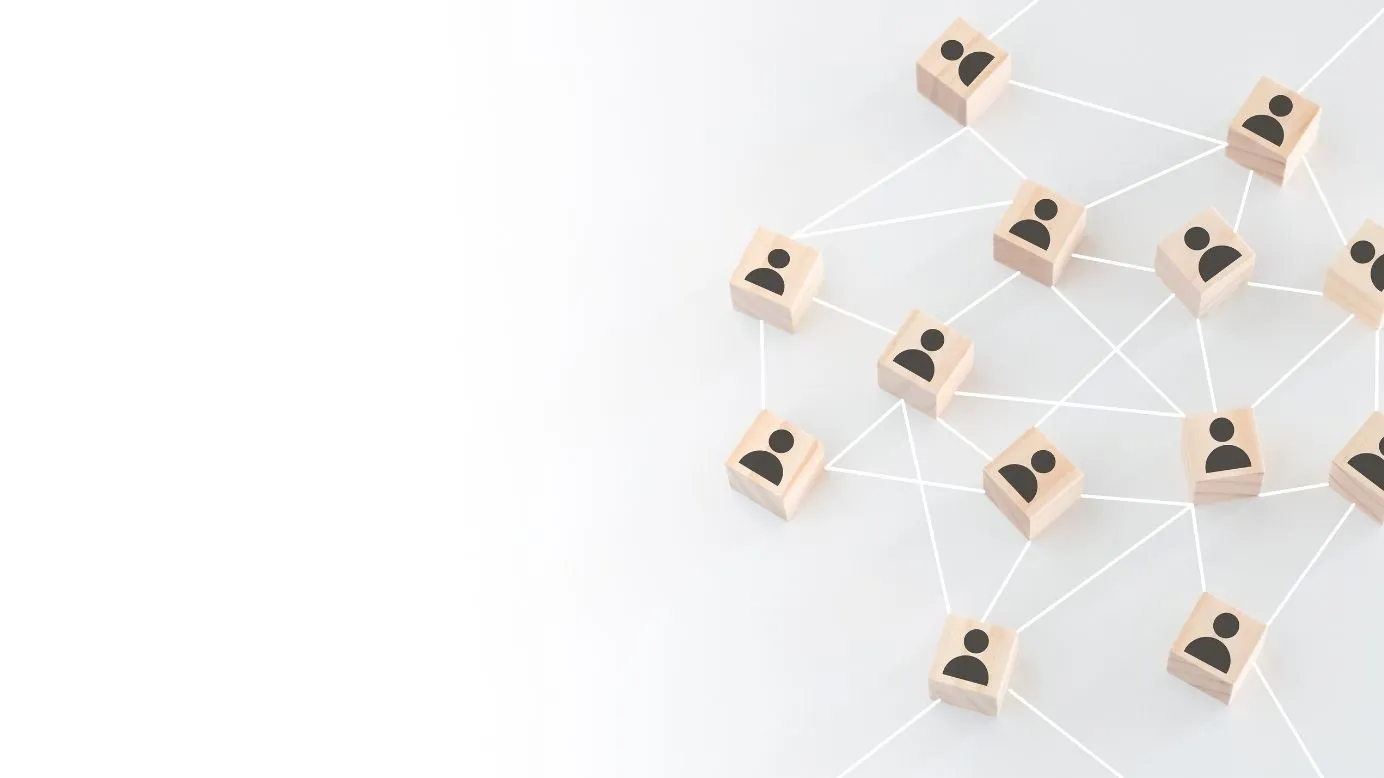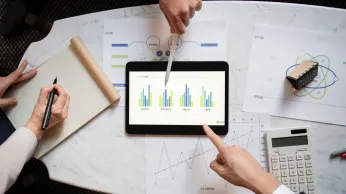¿B2B, B2C o C2C? Todo es marketing de persona a persona
Hemos pasado tanto tiempo peleándonos sobre qué tipo de marketing es el mejor que a menudo olvidamos de qué se trata: marketing de persona a persona.
En esta página
¿B2B o B2C? Este ha sido uno de los temas más debatidos en los últimos cinco años de nuestra empresa. Mucha gente ha planteado diferentes tipos de preguntas sobre nuestra visión del B2B y el B2C. Además, hay otros términos que complican aún más las cosas. Es posible que haya oído hablar de C2C, B2G y B2B2C. Pero, ¿qué hay del marketing de persona a persona?
Manoj Agarwal, cofundador de Xoxoday,comparte algunas de sus enseñanzas a lo largo de los años sobre este revuelo en torno a estas palabras.
Cuando empezamos en 2012, planeamos construir un negocio basado en el B2C. Los negocios de consumo B2C en Internet eran muy populares en ese periodo, y pensamos que los consumidores realmente querían el producto que estábamos construyendo. Empezamos con el regalo social y de grupo, que era una idea puramente B2C. Sin embargo, al cabo de 4-5 meses nos dimos cuenta de que la idea no funcionaba como habíamos pensado.
Con algunos consejos, empezamos a "regalos a granel pedidos al por mayor. Estos pedidos al por mayor nos ayudaron a hacer crecer el negocio, coger impulso, aprender los matices de dirigir una empresa, formar un equipo, crear una base de consumidores críticos, relaciones con los proveedores y mucho más.
¿Qué es el marketing de persona a persona?
En la jerga de la gestión, esto no era más que un negocio B2B. Aunque seguimos con el modelo B2B, utilizamos lo que aprendimos en este viaje y perfeccionamos nuestro modelo de negocio. El flujo de caja del B2B y los conocimientos de estas transacciones nos ayudaron a construir poco a poco nuestro negocio B2C.
Hoy tenemos una saludable mezcla de B2B y B2C. Dado que el mundo avanza hacia una economía colaborativa y el tipo de sector en el que nos movemos, tiene mucho sentido que nos dediquemos también al C2C. De ahí que hayamos estado trabajando para construir también un sólido modelo C2C en el que las experiencias sean vendidas "por la gente, para la gente". Muchas de las experiencias y actividades que ofrecemos son facilitadas por el gobierno, por lo que una parte del negocio también es B2G.
En los últimos 5 años nos hemos enfrentado a varias preguntas en torno a esta jerga. Estoy seguro de que a muchos de ustedes les habrá pasado lo mismo. Permítanme compartir algunas de estas preguntas e incidentes. En 2012-13, todo el mundo estaba loco por los negocios de consumo en Internet, financiados con millones de dólares. Durante estos tiempos, aunque éramos principalmente B2C, nuestro enfoque era más hacia B2B.
A continuación se exponen algunas de las cuestiones a las que nos enfrentamos durante esos años:
- ¿Por qué hace B2B y B2C a la vez? ¿No está perdiendo el foco?
- ¿Por qué pierdes el tiempo con el B2B, que crece tan lentamente?
- ¿Por qué no está construyendo un B2C y recaudando grandes rondas?
- ¿Cree que su modelo B2B es escalable?
- ¿Ha visto recientemente salidas multimillonarias en empresas B2B?
Como siempre nos ha gustado que la gente nos sondee y nos haga este tipo de preguntas, todas ellas nos han ayudado a improvisar y a afinar nuestro negocio. A veces la gente se confundía y nos frustraba con estas preguntas.
Nos enfrentamos a preguntas de nuestros empleados y otras partes interesadas. Pero con la ayuda de nuestros mentores y nuestra determinación, mantuvimos el ímpetu e intentamos mantenernos alejados de esas distracciones, mientras trabajábamos en cualquier comentario que tuviera un impacto directo en nuestros clientes o en nuestro negocio.
Poco a poco nos dimos cuenta de que mucha gente no entiende realmente la verdadera esencia del B2C o el B2B. Piensan que son definiciones fundamentales del modelo de negocio, cuando en realidad no son más que canales para llegar al consumidor. Para explicárselo a algunas de estas personas, intentamos tomar un camino intermedio diciéndoles que no es solo B2B, sino que en realidad es B2B2C.
Quizá se pregunte qué es esta nueva bestia llamada "B2B2C". En lenguaje sencillo, es una transacción comercial que ocurre entre dos empresas, pero el consumo final es por parte de un consumidor. Bueno, la mayoría de los negocios B2B son de hecho B2B2C en términos de consumo, pero así es como los MBA os complicamos la vida.
Algunos de los mejores ejemplos que reforzaron nuestras creencias son:
- Los servicios de Facebook/Google son utilizados por miles de millones de consumidores, la mayoría de sus ingresos proceden del B2B.
- Los gigantes de Cola son marcas de consumo, pero también tienen grandes ventas B2B en hoteles, restaurantes y más.
- Muchas marcas de viajes tienen un canal B2C y otro B2B.
- La mayoría de las veces, en una transacción B2B, el consumo final es por parte del consumidor final (la historia detrás de otro término B2B2C), por ejemplo, MS Office se vende a una empresa, pero el usuario final es un consumidor.
- Amazon vende tanto a consumidores como a empresas.
En 2016, cuando muchos de estos modelos de negocio inflados de internet de consumo comenzaron a fracasar, nos enfrentamos a un conjunto diferente de preguntas como:
- ¿Por qué se dedican al B2C? ¿Por qué no se centran en el B2B?
- ¿El B2C no te está reventando el dinero?
- Ya hemos visto antes el baño de sangre del B2C, lo estamos viendo ahora. ¿Por qué no haces crecer tu B2B?
- Apenas ha habido una salida B2C en una década. ¿Por qué quieres hacer una?
- ¿No es el B2B más rentable y sostenible que el B2C?
Algunos de nuestros aprendizajes en B2B y B2C a lo largo de estos años nos ayudaron a encontrar respuestas a algunas de estas preguntas. Ninguno de estos canales es mejor o peor que el otro, ninguno es más fácil o más difícil que el otro. Se trata de mantener un equilibrio entre estos canales en función de tus recursos y factores externos.
Comprensión de B2B y B2C
A continuación encontrará una descripción completa de B2B y b2c:
Empresa a empresa (B2B)
B2B (Business-to-Business) se refiere al intercambio de productos, servicios o información entre dos o más empresas, que suele implicar transacciones de mayor envergadura y ciclos de venta más largos.
- No requiere un marketing intenso para empezar.
- Ayuda a obtener retroalimentación e iteraciones inmediatas.
- La planificación financiera es fácil. Conoces los ingresos previstos y puedes planificar tus gastos en consecuencia.
- Consigues un entorno más controlado.
- El alcance y la escala pueden ser limitados
- Las barreras de entrada pueden ser elevadas debido a las relaciones comerciales con la competencia.
- Ayuda a generar ingresos y flujos de caja tempranos.
- Las ventas pueden depender de las personas.
- El negocio de los clientes a corto plazo conlleva riesgos de fracaso.
- La toma de decisiones puede ser compleja debido a las múltiples partes interesadas.
- Por lo general, se trata de ofertas de entradas elevadas.
- Normalmente a largo plazo.
- Ciclos de venta largos.
- Alto impacto.
- Las relaciones son fundamentales.
Empresa a consumidor (B2C)
El término business-to-consumer (B2C) se refiere al proceso de venta de productos y servicios directamente entre una empresa y los consumidores, que son los usuarios finales de sus productos o servicios.
- Podríamos necesitar un fuerte enfoque de marketing.
- La reacción de los consumidores puede llevar tiempo.
- Las iteraciones pueden ser costosas.
- Es difícil calibrar los ingresos y, por tanto, los gastos pueden dispararse.
- El entorno está menos controlado.
- Si su producto funciona bien, el retorno de la inversión es muy alto.
- El alcance y la escala pueden ser enormes.
- Las barreras de entrada pueden ser bajas para adquirir clientes frente a la competencia.
- Ayuda a crear una conciencia de marca temprana.
- Las ventas se realizan generalmente a través de un tirón de marca.
- Los elevados costes de captación de clientes entrañan riesgos de fracaso.
- El responsable de la toma de decisiones suele ser un individuo.
La segmentación en términos de comportamiento empresarial (B2B) y del consumidor (B2C) es una dicotomía engañosa, para empezar. Hoy en día, vivimos en una economía en la que existe una delgada línea de diferencia entre un comprador y un vendedor.
Los costes de creación de empresas son pequeños, la gente quiere consumir en lugar de acumular activos, la gente quiere ganar mientras comparte. De ahí que cualquiera pueda ser vendedor o comprador. Las empresas se democratizan ylas diferencias entre B2B y B2Cse difuminan a cada minuto.
La mayoría de las empresas del mundo tienen una buena mezcla de B2B o B2C o B2G o C2C. Para muchas empresas de éxito, estos modelos no son más que "canales". Los canales cambian en función de las preferencias de los consumidores, los factores macroeconómicos y microeconómicos, los planes a corto y largo plazo de una empresa, la situación financiera de la empresa, etc.
Mientras que B2B, B2C y B2G son rutas tradicionales y establecidas que las empresas han estado tomando durante muchos años, la dinámica empresarial sigue cambiando y, por lo tanto, seguirán apareciendo nuevas rutas como C2C.
El C2C es hoy más común que antes. B2B y B2C podrían ser una visión demasiado corta para definir el comportamiento del consumidor en estos tiempos. Las tendencias de marketing también van hacia las comunicaciones one-to-one.
Todo es marketing de persona a persona
No consideremos B2B/B2C/B2G/C2C como modelos de negocio y los tratemos como si fueran mutuamente excluyentes y funcionaran en silos. En su lugar, tratémoslos como meros canales para llegar al consumidor.
Todos o algunos de estos canales pueden coexistir. Los empresarios y profesionales deben salir de estos muros de B2B, B2C, etc. Uno o varios de ellos pueden coexistir en la misma empresa. En su lugar, hay que centrarse en el panorama general del marketing de empresa a persona.
Un profesional inteligente es aquel que puede equilibrar la cartera entre estos canales y crear valor para las partes interesadas de la empresa.
Así que no nos confundamos ni confundamos a los demás con estas clasificaciones. Hagámoslo sencillo.
Todo es marketing de persona a persona o marketing H2H. Es para la gente y por la gente.
Xoxoday Plum permite a las empresas hacer precisamente eso a través de tarjetas regalo digitales personalizadas diseñadas para un compromiso auténtico. Ya sea para dar las gracias a los clientes, incentivar a los socios o deleitar a los clientes, Plum le ayuda a ofrecer recompensas personalizadas que hacen que las personas se sientan vistas y valoradas, en cualquier modelo de negocio o canal.
Es una forma sencilla pero poderosa de convertir las transacciones cotidianas en relaciones duraderas.
El blog se publicó originalmenteaquí.


















